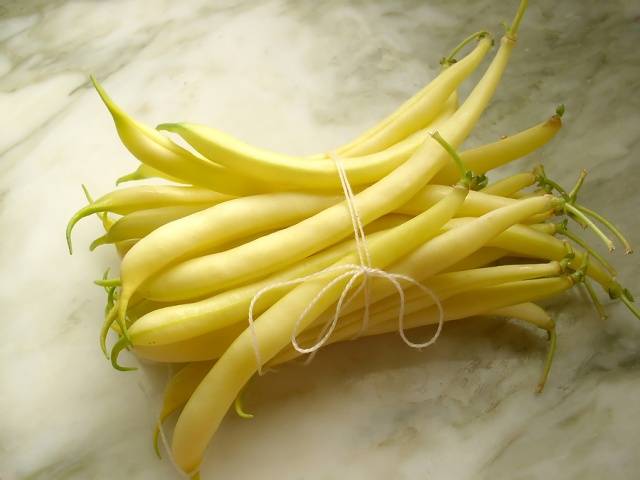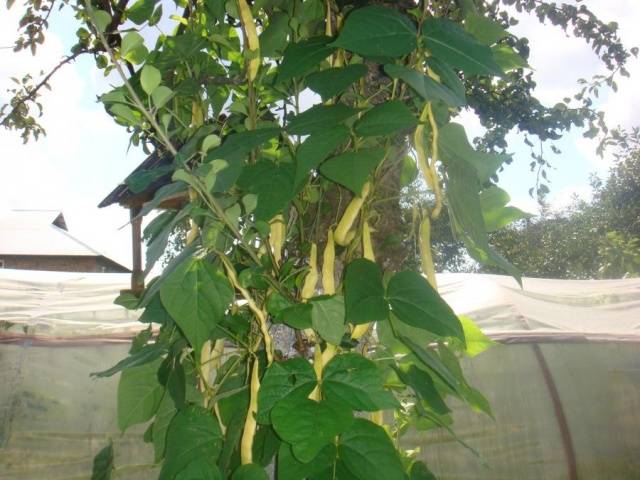Green beans are an overseas guest, native to Central and South America. Although, at present, it has become a full-fledged resident in our gardens and vegetable gardens. The taste of the fruit is reminiscent of the taste of young asparagus shoots, hence the origin of the name.
Benefit
The beneficial properties of green beans have long been appreciated by vegetarians; people losing weight and leading a healthy lifestyle have also turned their attention to beans, as they are a source of vitamins, microelements, fiber and easily digestible proteins. It is proteins that are responsible for the construction of our body. Regular consumption of green beans will strengthen the immune system, eyesight, heart and blood vessels. Fiber has a beneficial effect on the stomach and intestines and promotes the timely evacuation of unprocessed food debris.
Description
The pods of asparagus beans are used in cooking entirely, along with the leaves, since they do not have hard fibers or a parchment layer. The agricultural company "Gavrish" offers gardeners the original variety Gerda. This variety is early ripening, only 50 days pass from the emergence of seedlings to the ripening of the first fruits. The pods grow up to 30 cm in length, round, up to 3 cm in diameter. They differ from other varieties in the color of the fruit; they are pale yellow. They are convenient to collect, as if the sun's rays are penetrating green leaves.
Gerda bean is a climbing plant that grows up to 3 m in height, the lower beans grow at a height of 40-50 cm.The plant definitely requires vertical support. If you don’t want to arrange a support, then plant the Gerda variety near the fence or near the gazebo. Thus, the plant will additionally perform a decorative function, forming a hedge and protecting it from prying eyes.
Growing
The Gerda variety can be grown by any gardener, even a beginner. The plant is unpretentious, but you should carefully choose a place for growing: a well-lit, windless area is the best place for the Gerda variety. Soils suitable are sandy loam or loamy. They warm up quickly, conduct water well, and moisture does not stagnate in them. These are the soils that green beans require.
But loamy and sandy loam soils are characterized by a low content of organic and mineral substances. Therefore, in order to grow a good harvest, take care of applying fertilizers. Part of the fertilizer is applied in the fall when digging up the soil. Fresh manure and potassium-phosphorus fertilizers will help future plants during the growing season.
Asparagus beans of the Gerda variety are planted in the ground in late May - early June. Make sure there are no more frosts and that the soil is warm enough. Then you can start planting. Seeds are sown in prepared soil to a depth of 3-4 cm, following a planting pattern of 10x50 cm.
Before you start planting, take care of the support for the future plant. A very successful design of a support in the form of a pyramid. Take 4 poles, 3.5-4 m long, and place them in the corners of a square with a side of 50-100 cm. The tops are brought together and fastened.The seeds are planted on the sides of the square; over time, the entire pyramid will be hidden under the leaves and fruits. Watch the video to see what these supports look like:
Regular care of green beans consists of watering, weeding, and fertilizing. You can feed it with ash, slurry, or herbal infusion.
Don't miss the moment of harvest. Green bean pods are harvested at the stage of milky ripeness. It is best to collect fruits daily, then the plant becomes more active and produces more and more fruits. The Gerda variety is suitable for fresh consumption, canning and freezing.
Conclusion
Gerda beans will not require much effort from you to grow them. You will get healthy fruits rich in protein, fiber and vitamins. From 1 sq. m you can get up to 4 kg of harvest.













